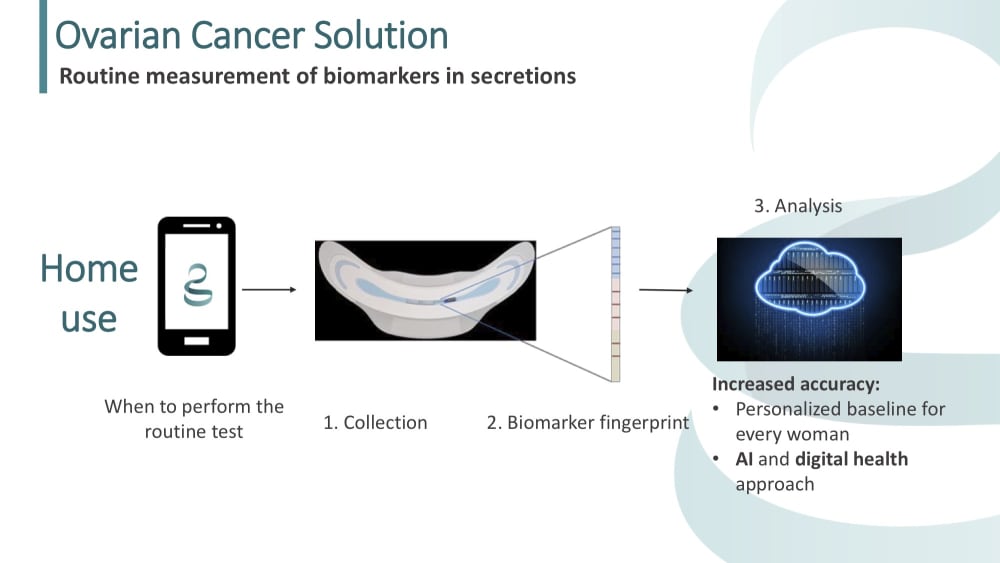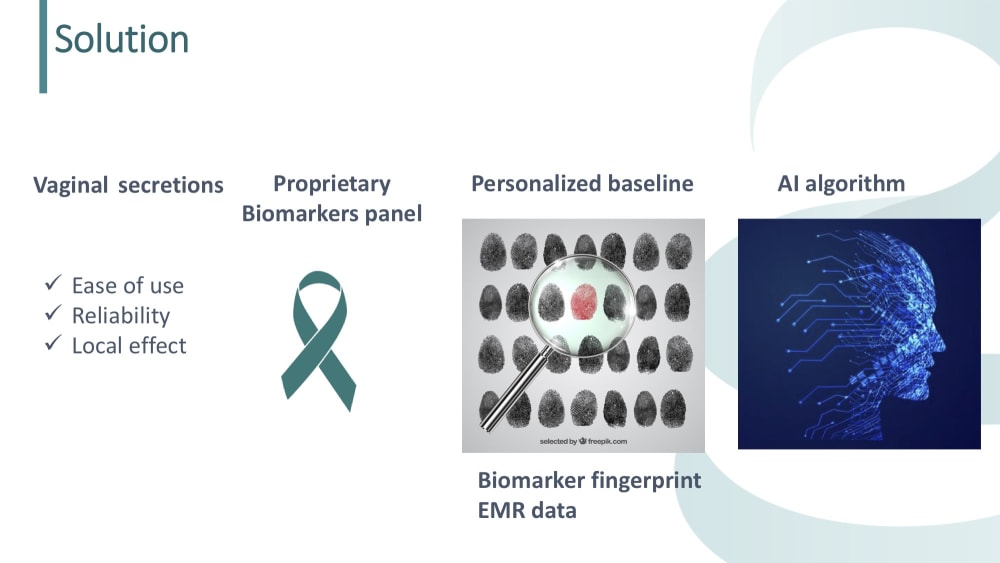
The home-use diagnostic pad enables women to specifically and personally follow their own feminine discharges for changes and progressions in physiologic conditions. The pad constitutes an AI-empowered early detection platform for at-home monitoring of cancerous biomarkers detection in feminine discharges. The system enables the women to establish an individual baseline, which could serve as a personal reference. The system allows women to monitor their condition in frequent intervals, for example, once a month; enabling the detection of changes early in the disease propagation. A biomarkers detection unit is embedded in the smart diagnostic pad. Upon use, the results appeared on the detection unit are captured and uploaded to a smartphone for analysis by a designated software, that may alert the woman and her caregiver once a change from the personalized reference values was detected.
The first indication to be focused on is ovarian cancer. Ovarian cancer demonstrates the highest mortality rates among gynecological cancers. The main reason for this is that ovarian cancer are asymptomatic in early stages, and the majority of the patients (75%) are diagnosed at stages III and IV. Albeit significant progression in early detection of many cancers, ovarian cancer early diagnosis still presents a challenge, with no improvement in patients’ 5 years’ survival rate for over a decade. The presence of genetic factors or familial occurrence significantly increase the risk for ovarian cancer. These populations are at high risk for developing ovarian cancer early in their lives, but if caught and treated at an early stage, ovarian cancer may be curable. Treatment usually includes some combination of surgery, radiation therapy, and chemotherapy. However, none of the available tests today provides women with a self-operable solution, which is simple and easy to follow on a regular basis. We have already demonstrated there is a high concentration of ovarian cancer related biomarkers in feminine discharges as compared to blood serum. In addition, we have found a specific biomarkers combination that enables to distinguish between healthy volunteers and women with ovarian cancer.
The concept of identifying precise biomarker profiles for each type of pathology using feminine discharges, along with the use of AI tools to analyze very small samples, enabled the creation of a revolutionary product to facilitate the early detection of many diseases, for which up to date no early detection exists (ovarian cancer, endometriosis and many more).
Using this untapped matrix and digital health approach, we expect to increase the accuracy and specificity of biomarkers measurement.
Altogether, the availability, low costs, ease of use and high screening frequency in combination with a digital health strategy promises high patient engagement along with reliable results that will literally save women’s life.
-
Awards
-
 2022 Top 10 Most Popular
2022 Top 10 Most Popular
Like this entry?
-
About the Entrant
- Name:Shlomit Yehudai Reshef
- Type of entry:individual
- Patent status:patented





